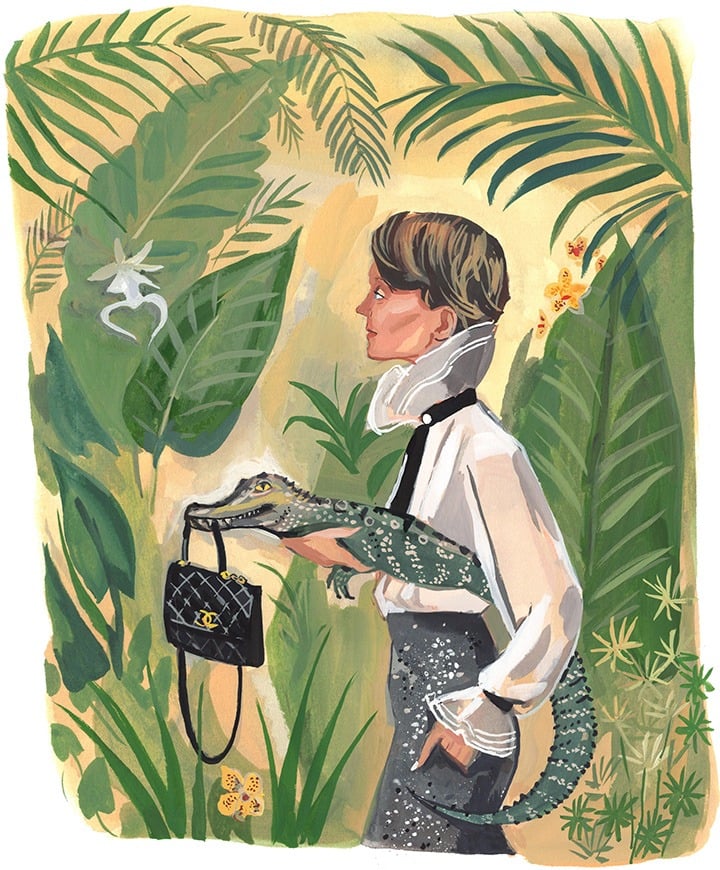
Jenny Kroik’s exclusive cover for Bal Harbour magazine, Anja at Bal Harbour, with Ghost Orchid
By Cait Munro
For most illustrators, scoring a New Yorker cover is the pinnacle of career success. For Jenny Kroik, a 35-year-old artist who began pursuing professional illustration when she moved to New York in 2016, it happened both quickly and organically. “I didn’t really have a contact, I just found various email addresses and I decided I would just do one a week, different ideas, and send them. I thought, nobody’s looking at these probably-disconnected emails I found,” she recalls. “And then, I got a reply a few months later.” She has since done the magazine’s cover three times.
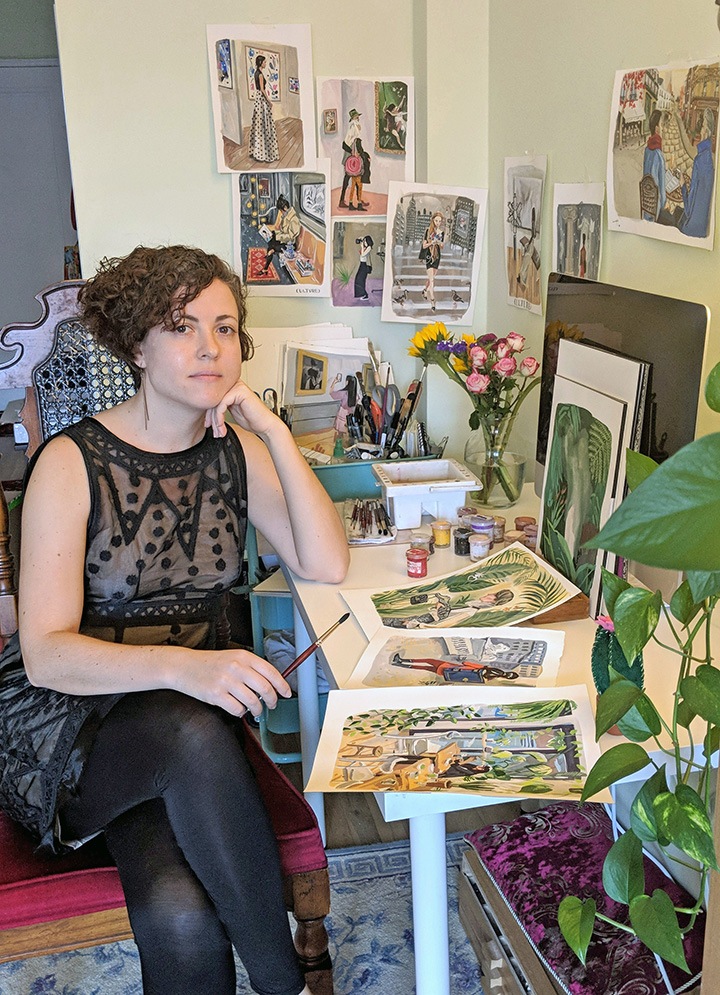
Illustrator, Jenny Kroik in her studio
It’s hard to believe, looking at her work, that Kroik has only lived in New York for three years. Born in St. Petersburg, Russia and raised in Israel, she earned a BFA from the Art Institute of Boston in 2006, and an MFA from the University of Oregon, where she later taught, in 2010. “I’m definitely a city girl,” she says, confessing that before New York, “I lived in various places where I always felt a bit uncomfortable, like I’m not quite in the right place.”
In Kroik’s illustrations, landmarks like the subway, the Strand, the Met, the New Museum, Eataly, and Bryant Park serve as backdrops for stylishly-dressed women – her subjects are almost always female, and even when they’re not, she says, viewers think they are — to live out quietly aspirational urban fantasies. Hers is a picturesque version of the city, with less garbage and traffic jams, and more friendly fauna and sidewalk hand-holding and then the real deal. Which is, of course, what makes them so enjoyable.
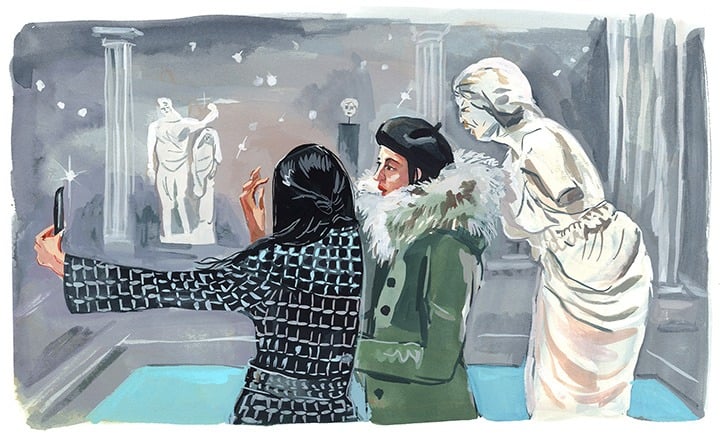
One of the artist’s work, Selfie Hall
For a recent New Yorker series, currently available online, Kroik visited the homes of local collectors to depict what living with art is really like (spoiler: it’s pretty wonderful). This also meant rendering paintings by the likes of Kara Walker and LaToya Ruby Frasier, as well as some sharply observed features of the homes, like a handbag that looks like a dog or a rainbow-shaped cat toy strewn across the floor.
While she majored in illustration as an undergrad, she was reticent to pigeonhole herself into one medium too early in her career and also experimented with installation, printmaking, and large-scale painting. “Then I kind of circled back to what I started with and came at it from a different perspective,” she says.
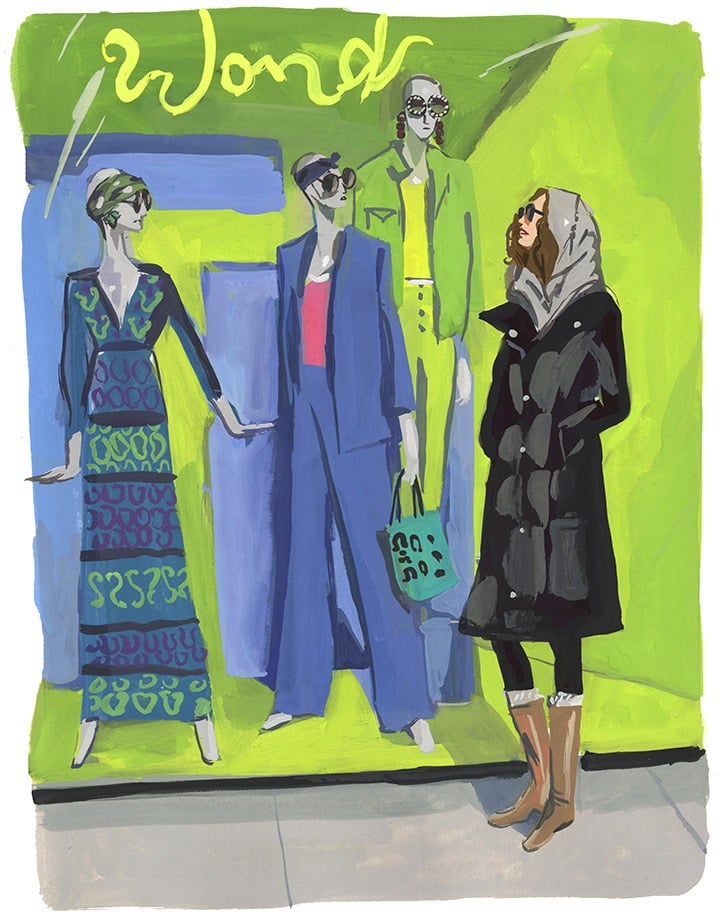
Dorina and the Mannequins
In addition to her work for the New Yorker, as well as the Washington Post, the LA Times, Cultured, and Penguin Random House, Kroik takes private commissions and works with the platform Society6, which allows artists to easily sell prints online. And thanks to Instagram, where she currently has over 21 thousand followers, Kroik says she’s managed to connect with niche fandoms for many of the recurring themes in her works: plants, bookstores, fine art, and food.
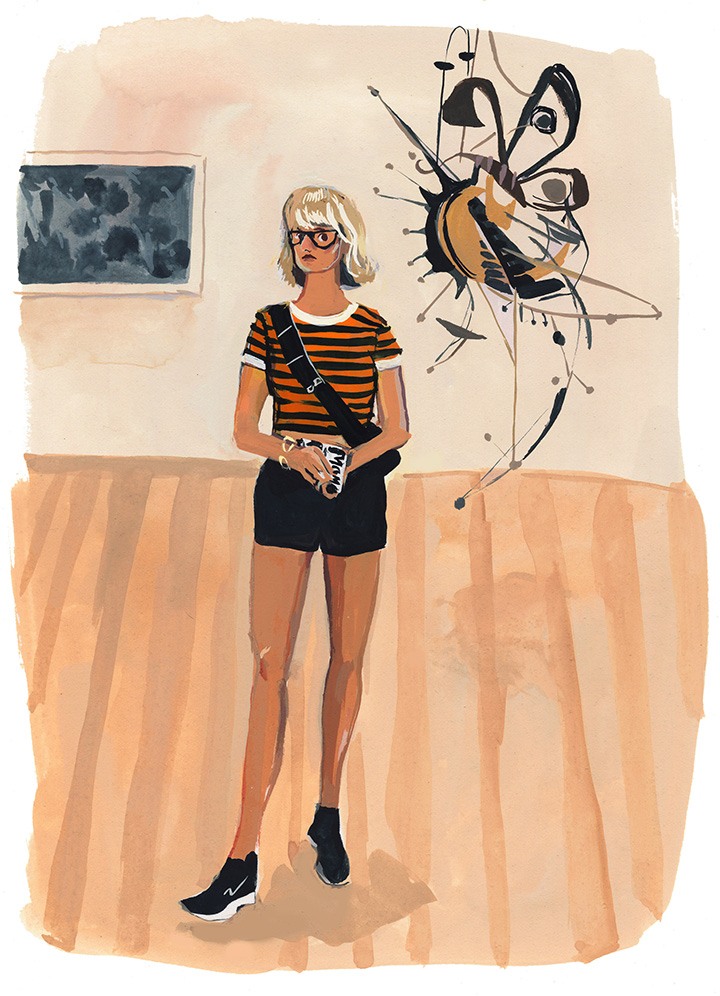
Looking at Lee Bontecou at the MoMa
“Something that I’m thinking about for this year is having even more of a range of people, ages, and body types,” Kroik says. “I think it’s important to see someone that’s like you represented. It’s about communication – if you want to talk to a lot of people, you have to address them.”
Like many young creative freelancers, Kroik says feeling like she’s “making it” means something different every day. “You’re always kind of paddling,” she explains. “It’s kind of like, I could take this job and make money, but then I’ll produce work that will get me more work I don’t want to do. So how do you get to do the work you want to do?”
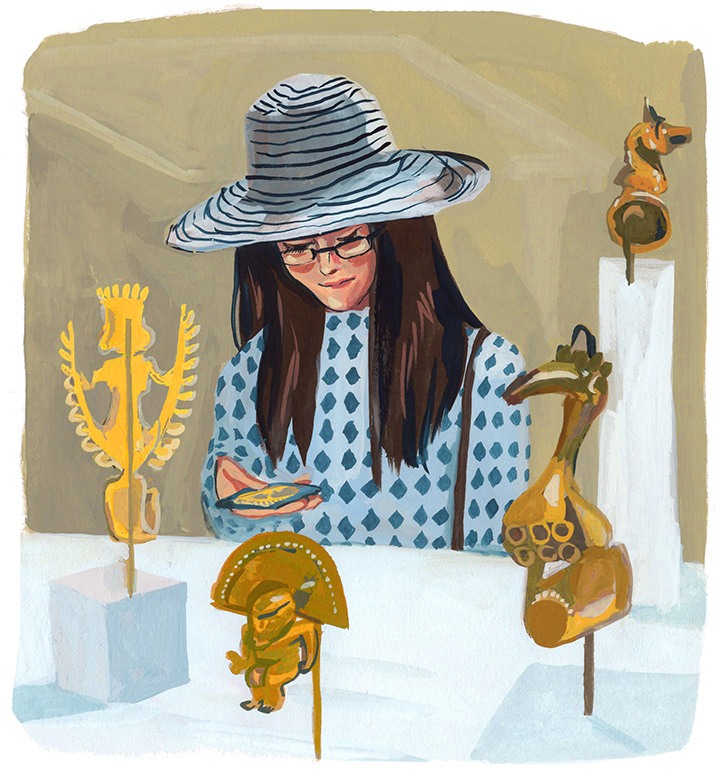
Gold at the Met
It’s an age-old question that’s wrankled plenty of artists. But with her detailed and stylish world-building, recurring depictions of flora, fashion, and the beautiful sides of New York, Kroik has ensured she’ll have an ever-growing fanbase following along as she figures it out.
Click here to read more of the latest inside the Spring 2020 issue of Bal Harbour magazine.

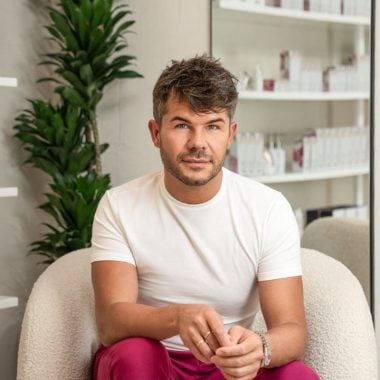

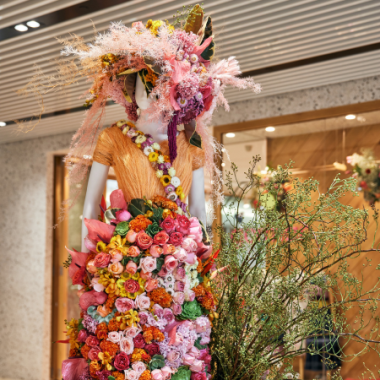

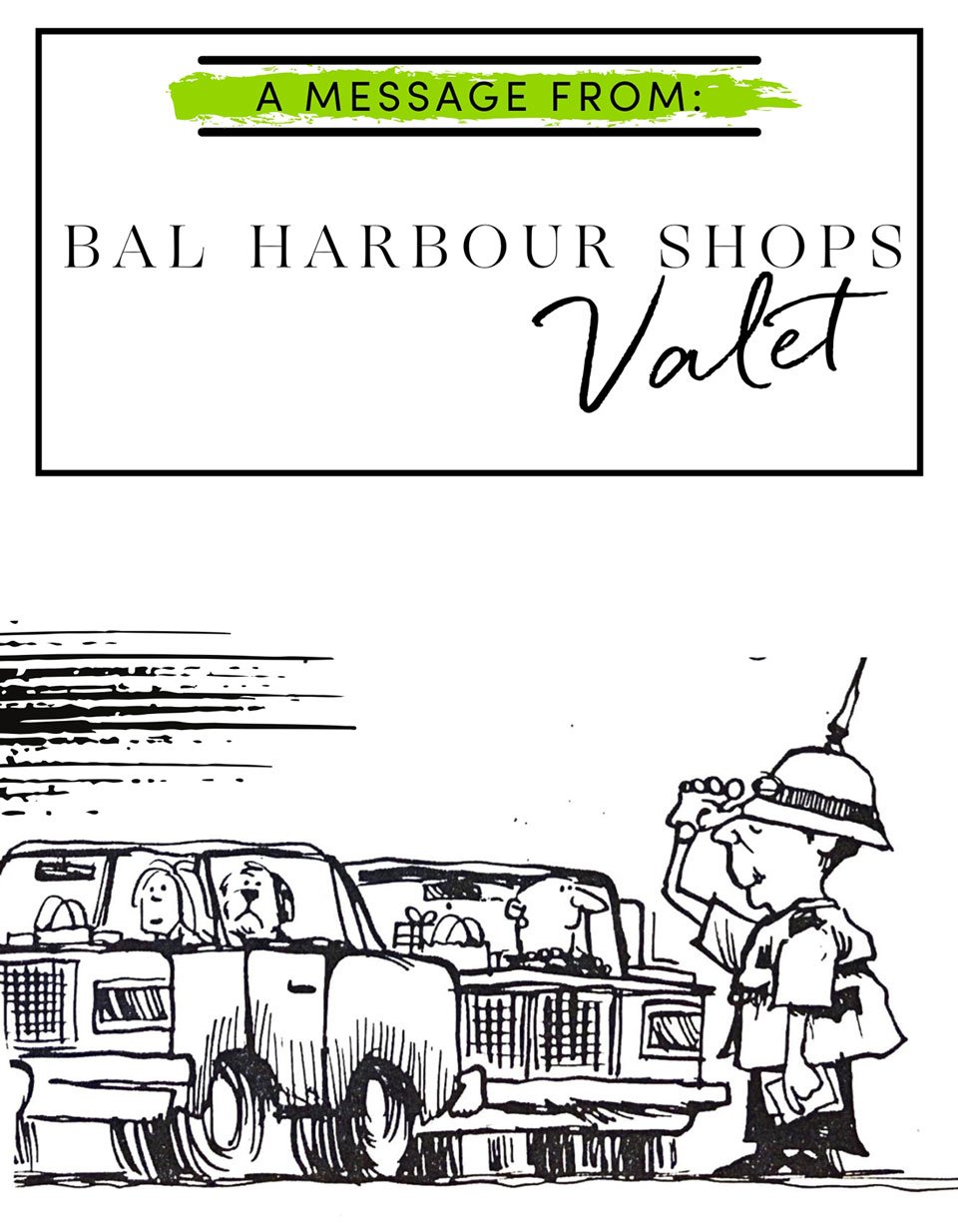
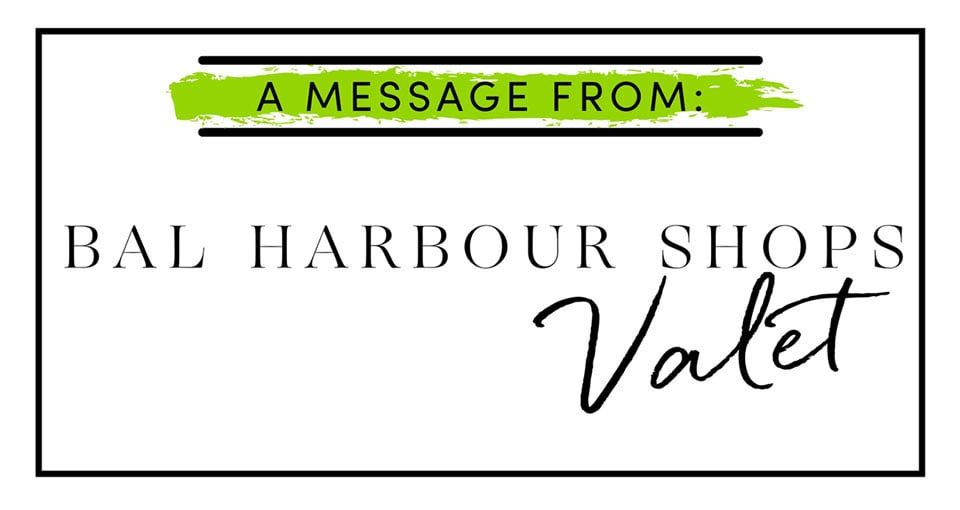
Leave a Comment